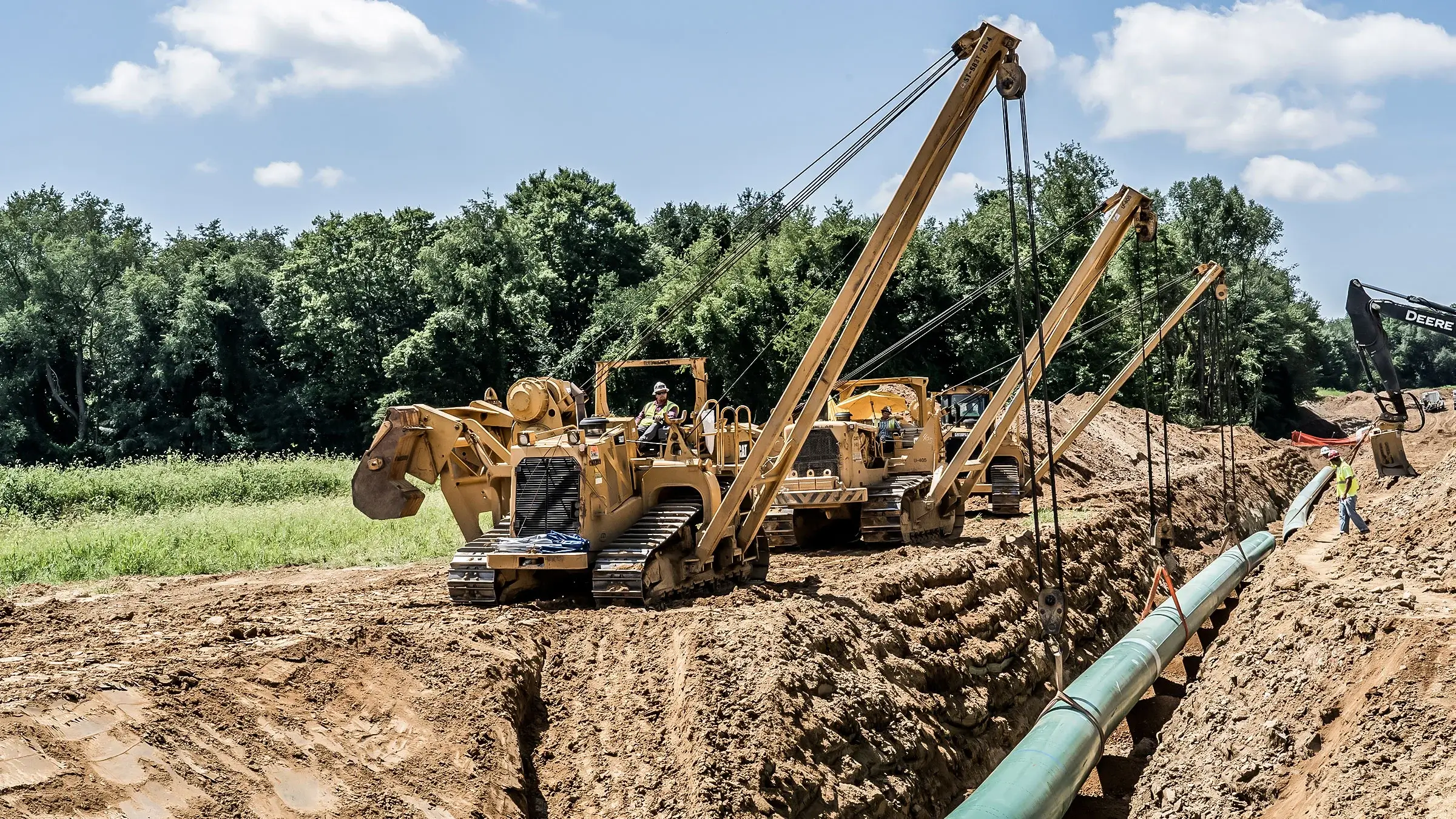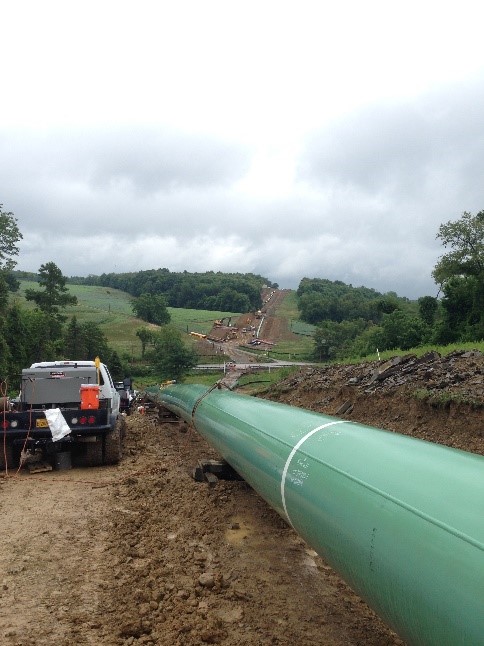Is DIY Worth It? Self-Installing Without Help From Creek Pipe Company
Wiki Article
The Importance of Pipeline Construction: Exploring the Solutions Used in the Industry
Pipeline construction is an essential part of modern framework. It assists in the transportation of necessary resources like oil, gas, and water. The sector includes numerous services, including preparation, site preparation, and installment. Each stage needs accuracy and adherence to security criteria. As communities depend upon these systems for their incomes, recognizing the intricacies of pipe construction reveals its value and potential difficulties. What variables influence the success of these jobs?Introduction of Pipeline Construction Services
Pipeline construction services incorporate a variety of specific tasks made to facilitate the setup of pipes for moving various compounds, consisting of oil, gas, and water. These solutions typically include site prep work, excavation, installment of pipe sectors, and backfilling. Competent labor and sophisticated tools are essential for guaranteeing each phase is performed with accuracy and safety.Safety protocols are critical, as these jobs commonly entail functioning with hazardous products and in challenging environments. Quality assurance measures ascertain that the pipelines meet industry criteria and guidelines. Additionally, the solutions might include trenchless innovation, which lessens surface disruption.Environmental considerations play a considerable duty in pipeline construction, requiring evaluations and reductions to shield bordering ecosystems. Overall, pipeline construction solutions are crucial for establishing the facilities required for energy and water circulation, sustaining both economic growth and social demands.Preparation and Style in Pipeline Projects
Efficient planning and layout are essential parts of successful pipeline projects, ensuring that all facets are meticulously addressed prior to construction begins. This phase includes complete expediency studies that analyze the technical, financial, and ecological elements affecting the job. Designers and developers collaborate to produce in-depth plans that describe the pipe path, products, and construction approaches, lining up with regulatory demands and industry standards.Advanced software program and modeling techniques are often utilized to simulate numerous situations, maximizing the style for performance and safety. Ecological impact evaluations are conducted to alleviate potential damage to ecosystems and neighborhoods, mirroring a commitment to lasting techniques. In addition, stakeholder involvement is necessary, promoting interaction and resolving problems from affected celebrations. Inevitably, effective planning and style established the foundation for a pipe job, decreasing risks and guaranteeing a structured construction procedure, ultimately adding to the general success of the procedure.Site Preparation and Excavation
Complete website prep work and excavation are important action in the pipe construction procedure. This phase includes an in-depth analysis of the land where the pipe will certainly be installed. Project teams conduct studies to identify dirt types, topography, and existing utility lines to guarantee a risk-free and effective excavation. Appropriate website prep work reduces ecological effect and assists in smoother construction operations.Excavation adheres to, where hefty equipment is used to get rid of soil and rock, creating a trench that meets the defined deepness and size for the pipe. This procedure must abide by safety laws and environmental guidelines to stop damages to bordering ecosystems.Additionally, disintegration control steps are applied to maintain the website during and after excavation. Reliable website prep work and excavation contribute considerably to the overall success of pipe projects, laying a solid foundation for the succeeding stages of construction.Pipeline Installation Methods
Pipeline installation methods are necessary for the successful implementation of infrastructure tasks. 2 popular methods consist of trenchless innovation, which reduces surface disturbance, and the open-cut excavation process, known for its uncomplicated technique. Each technique offers distinctive advantages and considerations relying on job requirements and ecological aspects.Trenchless Technology Methods
While typical techniques of pipe setup frequently entail considerable excavation, trenchless innovation methods supply a much more efficient and eco-friendly alternative. These ingenious techniques, such as straight directional drilling and pipeline bursting, minimize surface area disruption by permitting the installation of pipelines without considerable digging. This not just reduces the ecological impact however also significantly minimizes labor and remediation prices. Trenchless approaches facilitate the setup of pipes in urban areas where standard excavation would certainly be impractical or harmful to existing framework. Additionally, these methods can fit numerous soil types and conditions, making them functional solutions for pipeline construction. Eventually, trenchless modern technology represents a significant innovation in the pipeline industry, advertising sustainability and functional efficiency.
Open-Cut Excavation Refine
Open-cut excavation continues to be a fundamental technique in pipe installment, identified by the straight excavation of a trench to lay pipelines. This approach entails getting rid of dirt and various other products to produce a trench of adequate depth and width, permitting the positioning of pipelines at the needed grade. Open-cut excavation is typically liked for its cost-effectiveness and simpleness, particularly in areas with stable dirt problems. It can interrupt surface activities and calls for cautious planning to handle traffic and ecological effects. Security measures need to be implemented to secure employees and nearby infrastructure throughout the excavation process. Overall, while open-cut excavation might not be appropriate for all terrains, it stays a widely made use of technique in pipeline construction.Examining and High Quality Guarantee
Checking and quality control are vital components in pipe construction, making sure that installations satisfy established safety and security standards and efficiency requirements. Numerous evaluation strategies and techniques are used to evaluate worldly quality and adherence to governing compliance. This methodical approach assists identify prospective concerns before they rise, protecting the integrity of the pipeline system.
Inspection Techniques and Approaches
Assessment techniques and techniques are important components in ensuring the honesty and safety of pipe construction. Various strategies, consisting of visual examinations, ultrasonic testing, and radiographic exams, are used to discover defects and confirm high quality. Aesthetic evaluations permit the identification of surface area abnormalities, while ultrasonic testing utilizes audio waves to assess wall thickness and situate flaws internally. Radiographic assessments entail X-rays or gamma rays to produce Creek Pipe pipeline construction pictures of the pipe's framework, revealing concealed concerns. Additionally, pressure testing is performed to evaluate the pipeline's honesty under functional conditions. These techniques collectively add to a thorough understanding of the pipe's problem, allowing prompt maintenance decisions and making sure conformity with sector standards. Efficient examination is critical for avoiding failures and promoting long-term operational safety.Safety Standards Compliance
Ensuring compliance with safety criteria is extremely important in pipe construction, as it straight influences the task's general high quality and dependability. Adhering to recognized policies and guidelines guarantees that construction techniques minimize threats related to pipeline installation and operation. Creek Pipe HDPE installation. Extensive testing methods, consisting of non-destructive screening and pressure assessments, are crucial in validating that pipes can endure the operational stress and anxieties they will certainly come across. Quality control actions are additionally vital, as they establish a structure for constant monitoring and evaluation throughout the construction procedure. By prioritizing safety and security requirements compliance, firms not only shield workers and the environment yet likewise boost the stability of the pipe, ultimately leading to long-lasting functional success and public count on the facilitiesProduct Quality Evaluation
Product top quality examination plays a significant role in the total integrity of pipeline construction. This procedure involves extensive screening and quality assurance actions to guarantee that materials fulfill sector criteria and specs. Various examinations, consisting of tensile toughness, rust resistance, and weld honesty assessments, are performed to identify any possible weaknesses. An extensive analysis not only ensures the efficiency of the pipe however also boosts safety and security and longevity over its lifespan. Additionally, applying quality assurance methods aids mitigate threats associated with product failings, which can result in costly repair work and environmental risks. By focusing on worldly high quality assessment, companies can guarantee compliance with regulative needs while cultivating self-confidence amongst stakeholders in the dependability of their pipeline systems.Repair And Maintenance Providers
Maintenance and repair work services play an important function in the longevity and efficiency of pipe systems. These solutions incorporate regular assessments, troubleshooting, and restorative activities to resolve deterioration, leakages, and other issues that might emerge gradually. Proficient technicians utilize advanced innovations such as ultrasonic testing and smart pigging to monitor pipeline stability, making certain that any kind of potential problems are recognized early.Additionally, maintenance programs typically consist of set up safety nets developed to boost system reliability and lower the possibility of unanticipated failures. Repair services might involve the replacement of broken sections, sealing leaks, or employing trenchless innovation for marginal disruption.Environmental Compliance and Security Actions
Pipeline systems not just require ongoing upkeep and repair to operate effectively but also should stick to rigorous ecological compliance and precaution. These guidelines are vital for reducing ecological effect and guaranteeing public safety and security. Companies in the pipeline construction sector implement comprehensive ecological analyses prior to project initiation, determining possible risks to wild animals and ecosystems.Furthermore, adherence to security procedures protects workers and bordering communities. This consists of regular training on emergency situation action and spill prevention techniques.To preserve conformity, sectors utilize monitoring innovations to detect leaks and various other abnormalities in real-time. Ecological monitoring plans are usually developed to outline actions for attending to unforeseen issues throughout construction.Ultimately, stringent adherence to environmental conformity and precaution not just satisfies lawful obligations however additionally promotes lasting methods within the sector, advertising a balance in between infrastructure advancement and environmental stewardship.Frequently Asked Inquiries
What Profession Opportunities Are Available in Pipeline Construction?
Career possibilities in pipeline construction include duties such as task supervisors, engineers, welders, and safety and security inspectors. These placements require varied skills, offering pathways for development in an essential industry of framework advancement and power distribution.

Exactly How Do Pipeline Projects Influence Resident Communities?
Pipeline jobs substantially impact regional communities by influencing financial development, supplying work chances, and enhancing facilities. They may likewise raise issues concerning environmental results, land usage, and possible disruptions to community communication and all-natural ecosystems.
What Technology Is Made Use Of in Modern Pipeline Construction?
Modern pipe construction utilizes advanced innovations such as GIS for mapping, drones for aerial surveys, and automated welding systems to improve efficiency, safety, and accuracy, eventually facilitating the effective transportation of sources across different terrains. Creek Pipe pipeline construction.Exactly How Are Pipeline Construction Prices Approximated?
Pipeline construction prices are estimated through in-depth evaluations of products, labor, tools, and regulatory needs. Elements like terrain, project dimension, and environmental factors to consider additionally significantly affect the general budget plan and monetary planning for construction.What Are the Largest Difficulties in Pipeline Construction Projects?
The greatest challenges in pipe construction projects include regulative compliance, ecological issues, logistical problems, protecting funding, and managing labor lacks. Each element can considerably influence timelines and spending plans, making complex the total execution of the task.Report this wiki page